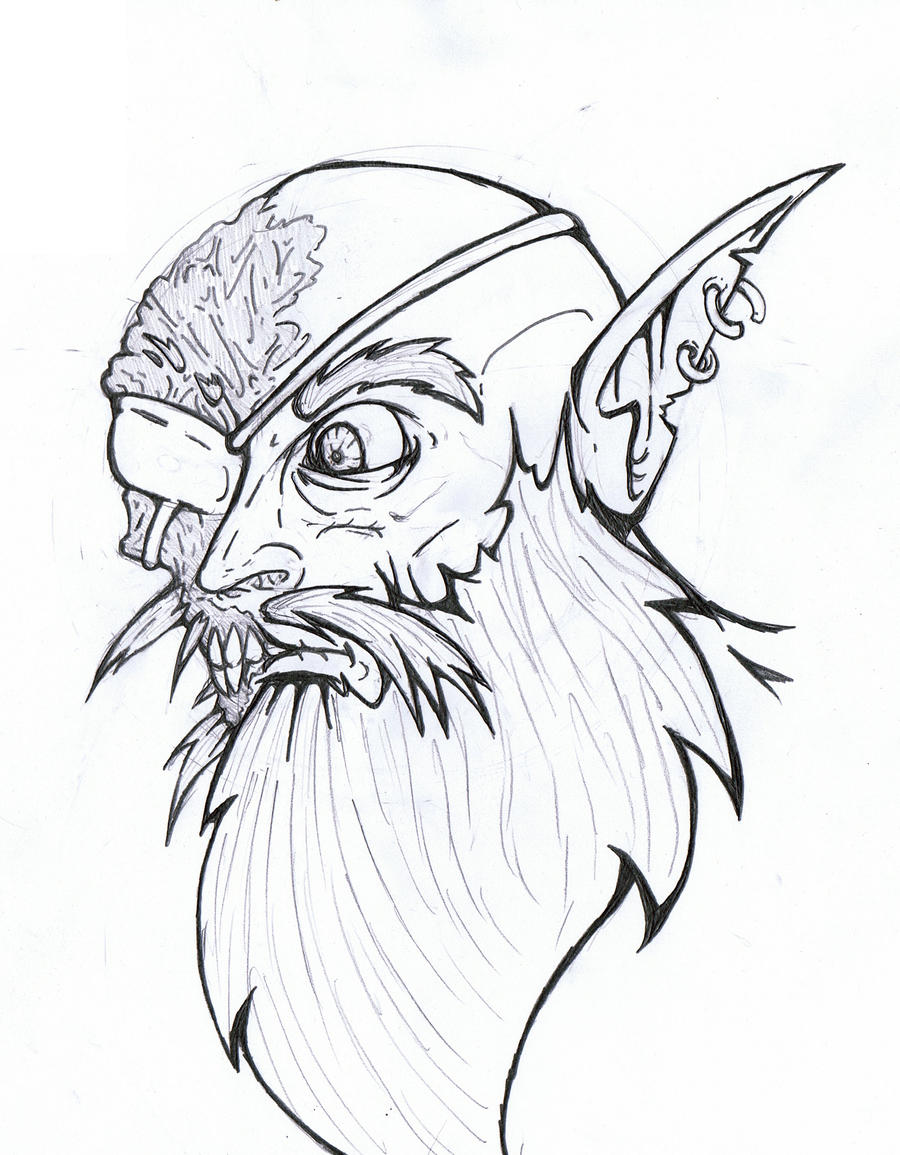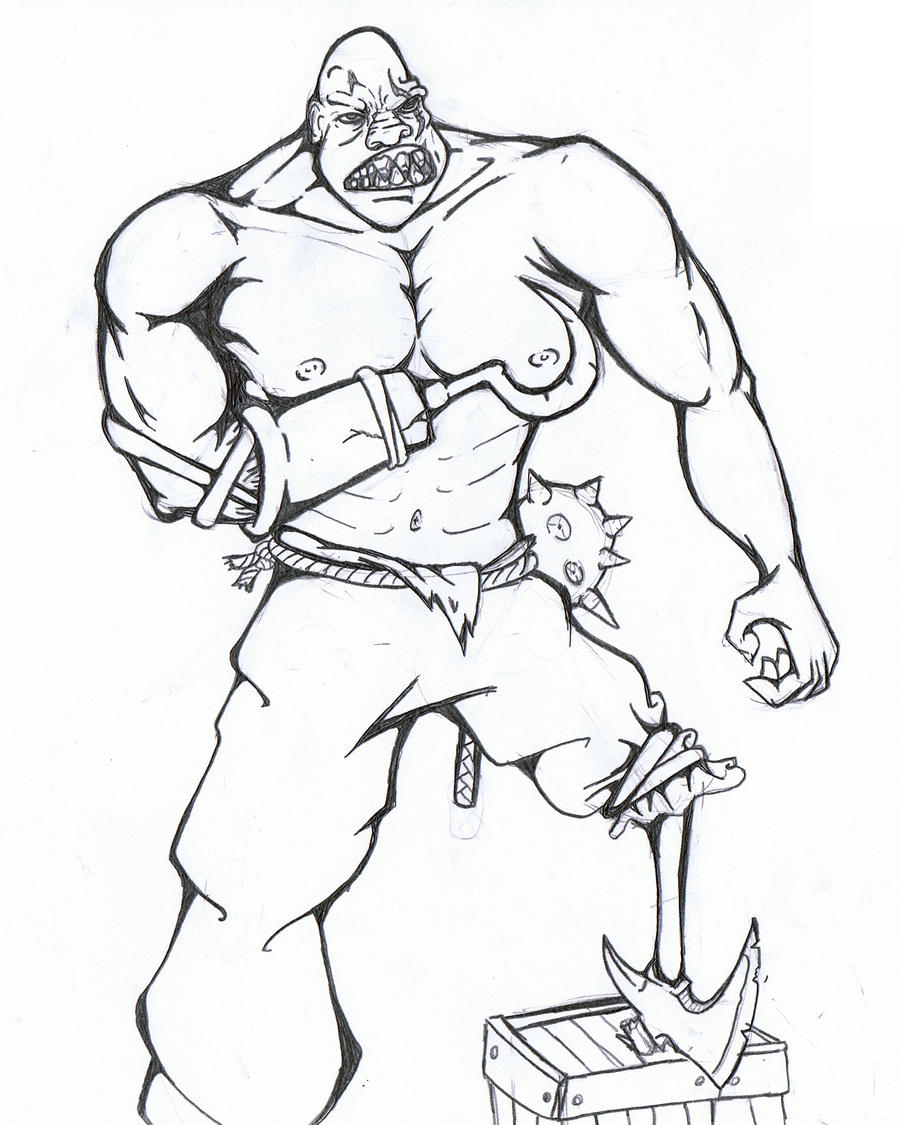Just a few sketches I found and scanned while moving.
The first couple here are villains from a brief pirate-based playtest I ran for Battle Royale.
These next two are a bit less clear. You ever find something you did a while ago and you can't figure out why? Or what the hell inspired it?
Wednesday, July 18, 2012
Monday, July 9, 2012
Another Shallow Review: Hell on Earth Reloaded
So, is horror-slash-fantasy-slash-steampunk-slash-western not enough for you? Then what about some horror-slash-fantasy-slash-dieselpunk-slash-western-slash-post-apocolyptic RPG gaming? Well, then perhaps you're the target audience of Deadlands' Hell On Earth setting.
I'm a big fan of Deadlands, if you recall the first full-length campaign I've ever completed was a Deadlands game and it was a hell of a good time. So once I heard today that Pinnacle was releasing their post-apocalyptic version, Hell On Earth, as for Savage Worlds then I was all over it. So far I've only skimmed it but just like the Savage Worlds Horror Companion I figured I'd give my first impression chapter by chapter.
Introduction
For such a nutty, kitchen-sink setting Deadlands has always had a rather complicated to justify it's zombie cowboys on steamcycles. It's interesting stuff but I often steal from far too many different sources to keep the canon intact. Besides I already know the general background (ghost rocks fall, everybody dies) and I'm just doing a quick skim to make sure I got my money's worth so I'm skipping most of it for now.
However, the writers should be commended for how completely they address various important setting issues such as "what is used as money?" or "are there still any satellites" and how people get around the place after the disaster.
Definitely an interesting read and probably pretty essential if you want to run the setting without any modification but for now let's move on.
Makin' Heroes
Character creation is pretty familiar, no big changes and it'll be even more familiar with it if you've got experience with the original Deadlands Reloaded. All the g's are removed from skills and you've got some familiar Hindrances along with some new ones like Rad Intolerance and Mutations. All good fun.
Now one of the things I liked most about Deadlands Reloaded was that a lot of it could be used for other settings. Many of the Edges were useful for other settings and they weren't at afraid to play around with the Arcane Background rules and came up with a lot of interesting variations that could easily be used in other ways. The hucksters for instance make a good set of "wild magic" spellcasting rules and the Blessed were an interesting departure from the regular Powers-and-power-points rules.
Unfortunately so far Hell On Earth doesn't quite seem to share that potential. The majority of the Edges are pretty setting-specific things like Rad Resistance or starting off with a car. I was especially interested in the Kung Fu edge because the martial arts rules from Deadlands Reloaded were very useful for other games. Unfortunately it's clear that the rules here are meant to work with Hell on Earth's higher tech level. The Kung Fu abilities range from "Too powerful for non-fu
turistic settings" to "too powerful for any setting". Mainly because a lot of them don't actually involve martial arts or even hand-to-hand combat. A cyborg cowboy with a laser pistol is just as likely to benefit from Kung Fu as an unarmed fighter, probably more because the cowboy has the benefits of his weaponry on top of it. The worst is that one of them grants the Hardy advantage, which anyone familiar with Savage Worlds should know is way too powerful to give away as just an Edge.
Equipment
Now, the equipment chapter I quite like. It's full of some useful gear for modern or close futuristic settings like specialty ammo, modern body armor and so on.
In general when it comes to near-future settings like post-apocalypse and cyberpunk gear tends to go two ways. Either they take into account the march of current technology (see the most recent edition of shadowrun where everything went wireless) or they go with the future of the past. Technology that, while futuristic in style, is often fairly unimpressive compared to actual modern devices. Hell On Earth is definitely of the second category which I find quite nice. It's got a kind of odd charm to it and much of it makes some sense when you think about it (after all most smartphones can't survive being sat on much less a supernatural apocalypse. So what's left is the clunkier and more durable bits of tech and things cobbled together from bits and bobs.
That said some of the more advanced equipment is fairly unimpressive. Compare for instance the gyrojet rocket pistol (2d6+2 damage, 24/48/96, half damage vs armored targets) to the Peacemaker (2d6+1 damage, 12/24/48, AP 1). Now, the gyrojet has slightly higher damage (very slightly) and impressive range it's six times as expensive and much more expensive to reload not to mention even a leather vest would render it useless.
But like I said, for the most part the equipment is solid and useful. The vehicle rules especially are going to be a godsend for a lot of Savage Worlds players who might be looking for some rules on tinkering with or customizing their vehicles. It's far from completely comprehensive but it's a good start.
Setting Rules
This extremely short chapter doesn't have much to comment on, except for the scavenging rules which I'm sure will see plenty of use and seem quite serviceable, although I probably would limit the scavenging to one player with others aiding them (otherwise players are likely to rack up huge hauls).
No Man's Land
So here we have the setting's Arcane Backgrounds. You've got a pretty big variety, Doomsayers (mutant radiation priests), Junkers (techno-wizards), Sykers (psionicists), Templars (holy knights), Toxic Shamans (shamans of pollution and garbage). You've also got the harrowed who are basically unchanged from the original Deadlands.
Unfortunately unlike the basic Deadlands setting the Hell On Earth ABs are pretty darn setting-focused. The Junkers are far more powerful than your average mad scientist for example and Toxic Shamans and Doomsayers are tied integrally to the setting. The Templars seem like your average Miracle wielders but they get a selection of Edges that make them truly impressive when battling evil. They might work in a modern setting (think the Knights of the Cross from Dresden Files) but otherwise they're far too kick-ass in for most settings. Psykers are amusing (baldness is an unfortunate side-effect of their powers) and they have some good new powers (like the ability to wipe memories or mentally communicate).
The powers are fairly useful and can easily be harvested for your own use or used as-is just fine. The only one that struck me as odd was the Slow Burn power (designed for Psykers to bust up heavily armored vehicles and the like). Unfortunately it doesn't actually work very well. For instance against a toughness 10, armor 70 vehicle the power inflicts 5d10 damage...now the probabilities of dice in savage worlds can be tough to calculate but to beat 80 on a 5d10 is still pretty damn astronomical odds. Also, as written it can't even hurt an unarmored target. But otherwise some fairly useful stuff and the AB's are fairly well-designed for the setting.
Marshall's Section
There's some pretty interesting stuff going on here. We've got weird weather, rules for mutations and fear levels. All of it seems okay.
Then we've got the setting info for specific cities and locations throughout the West. I don't have anything like the time needed to actually read through all this yet but what I do see is fairly interesting.
Then afterwards we've got a big collection of monsters. Some mutated, some mechanoid, some undead and some all three at once. Again, it looks serviceable but far too detailed for me to plunge into yet.
Quick Overview
There's a couple of things that bear mentioning in regards to the quality of the book. First, the art is quite nice and although there's plenty that was probably recycled from older Hell On Earth books it's all cool and evocative. Unfortunately the layout is pretty rough. The gear is pretty awkward (the tables of gear stats are all clustered at the end of the chapter) and the No Man's Land chapter is worse. It starts off immediately with one of the arcane backgrounds with no intro or explanation, then jumps to the rules for the Harrrowed, then back to the rest of the Arcane Backgrounds. Then we've got various rules scattered throughout the book like the (extremely bare-bones) bionics rules stuck in one of the city descriptions.
The other thing that bears mentioning is price. For some reason Hell On Earth pretty darn expensive, about 40 bucks for a 200 page book. That's quite spendy when you consider how reasonably priced the core Savage Worlds material tends to be. The Print and PDF package together is over 50 dollars when many companies include PDFs for free with their book (or at least at a very small extra price). All that was too rich for me so I went with the PDF alone which is a better deal at (a still quite high) 25$.
Final Thoughts
So, all in all it's a pretty mixed bag. There's a lot of stuff in Hell On Earth that's interesting or potentially useful but at the same time it's pretty darn expensive.
If you're a deadlands fan and you know for sure that you want to run or play in a Hell on Earth game then I'd say that the book's definitely worth picking up. You'll have a lot of fun. With minor editing it could easily be adjusted to various levels of post apocolyptic adventures. Some aspects of the setting bear a more than passing resemblance to Rifts for example (notably a high-tech conquering nation-state called the Combine with robotic minions with a skeletal motif).
However, if you're just a general fan of Savage Worlds and you're hoping to chop up the setting to use in completely different games then I don't think you'll find it very worthwhile considering the minimum price of 25 bucks.
Subscribe to:
Posts (Atom)




